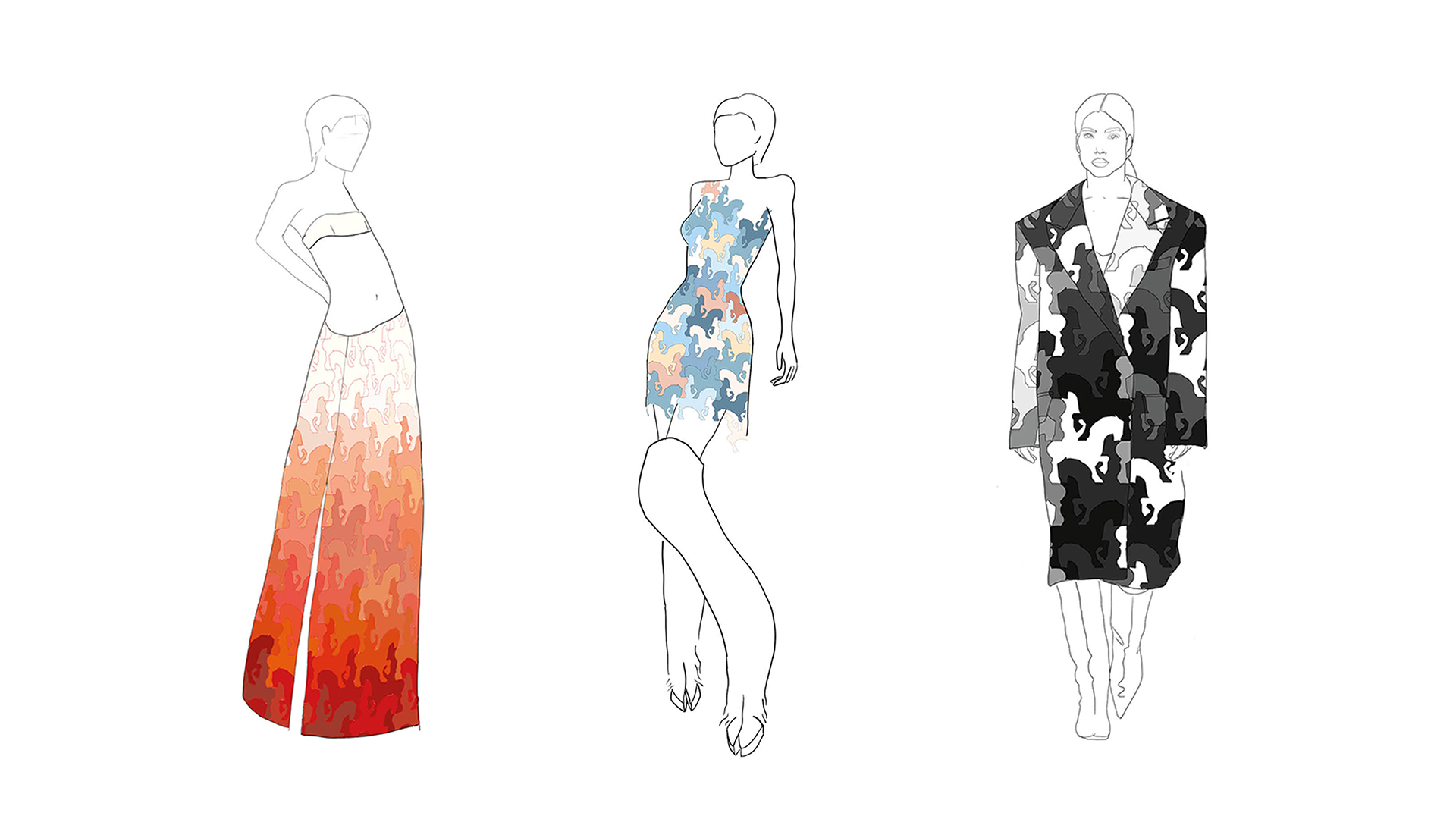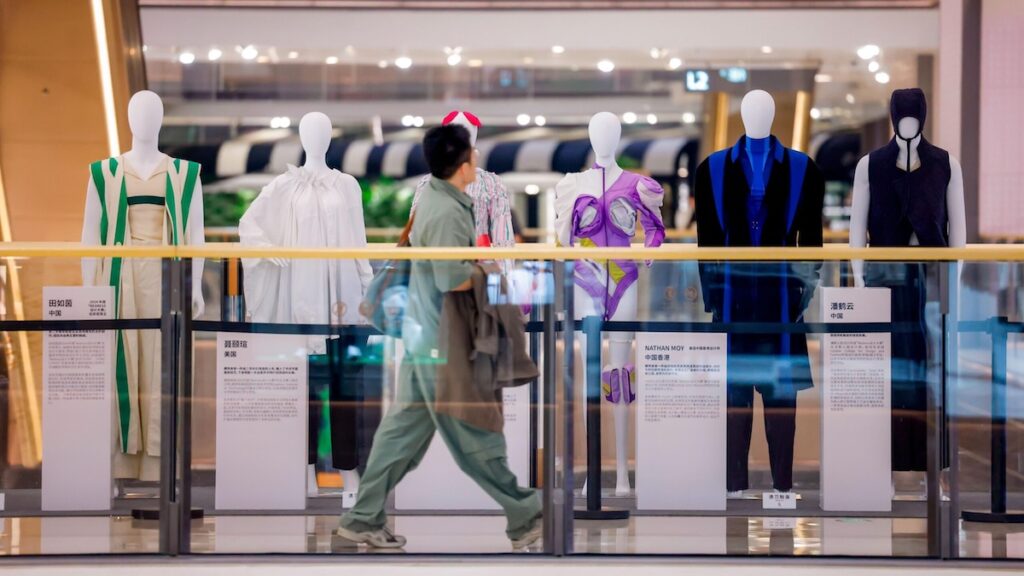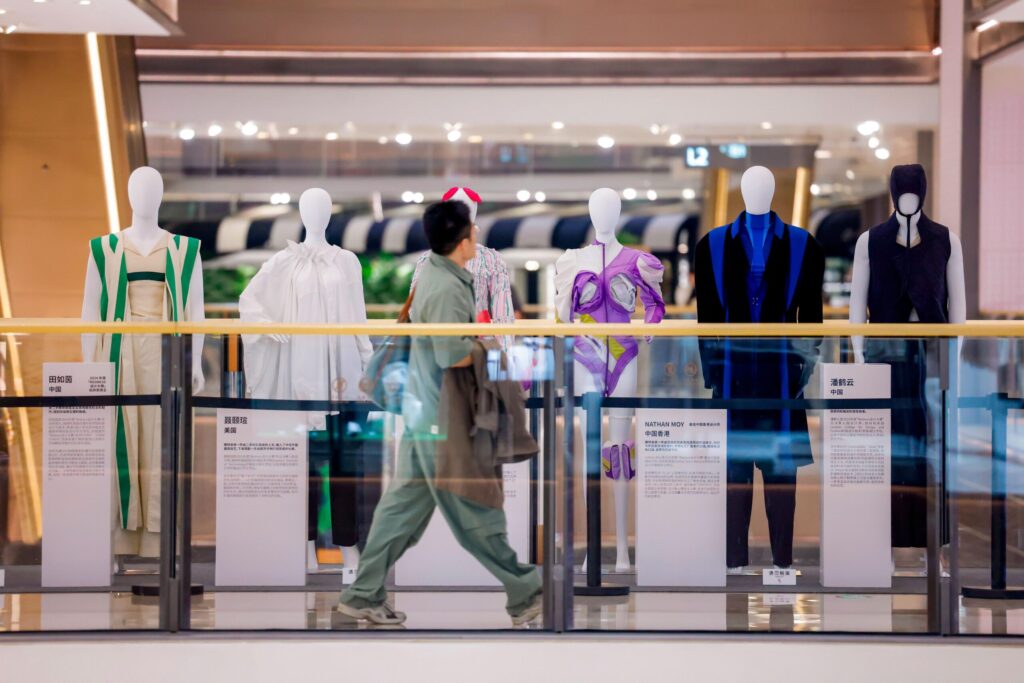Redress Design Award Collection
Lucie’s Redress Design Award collection, ‘Erlkönig’, explores the vast world of the German ballad ‘Der Erlkönig’ by Johann Wolfgang von Goethe. The individual looks represent figures in the story, with a wide variety of character traits and symbols depicted, from a naive son to a mesmerising daughter. Designing for low environmental impact and inspired by the artist MC Escher, Lucie applies a tessellation technique to durable leather from discarded furniture and factory surplus scraps, ensuring that even the smallest fragments become part of her garments. She then laser-cuts the pieces into patterns, paints, and assembles them with a zigzag seam.







